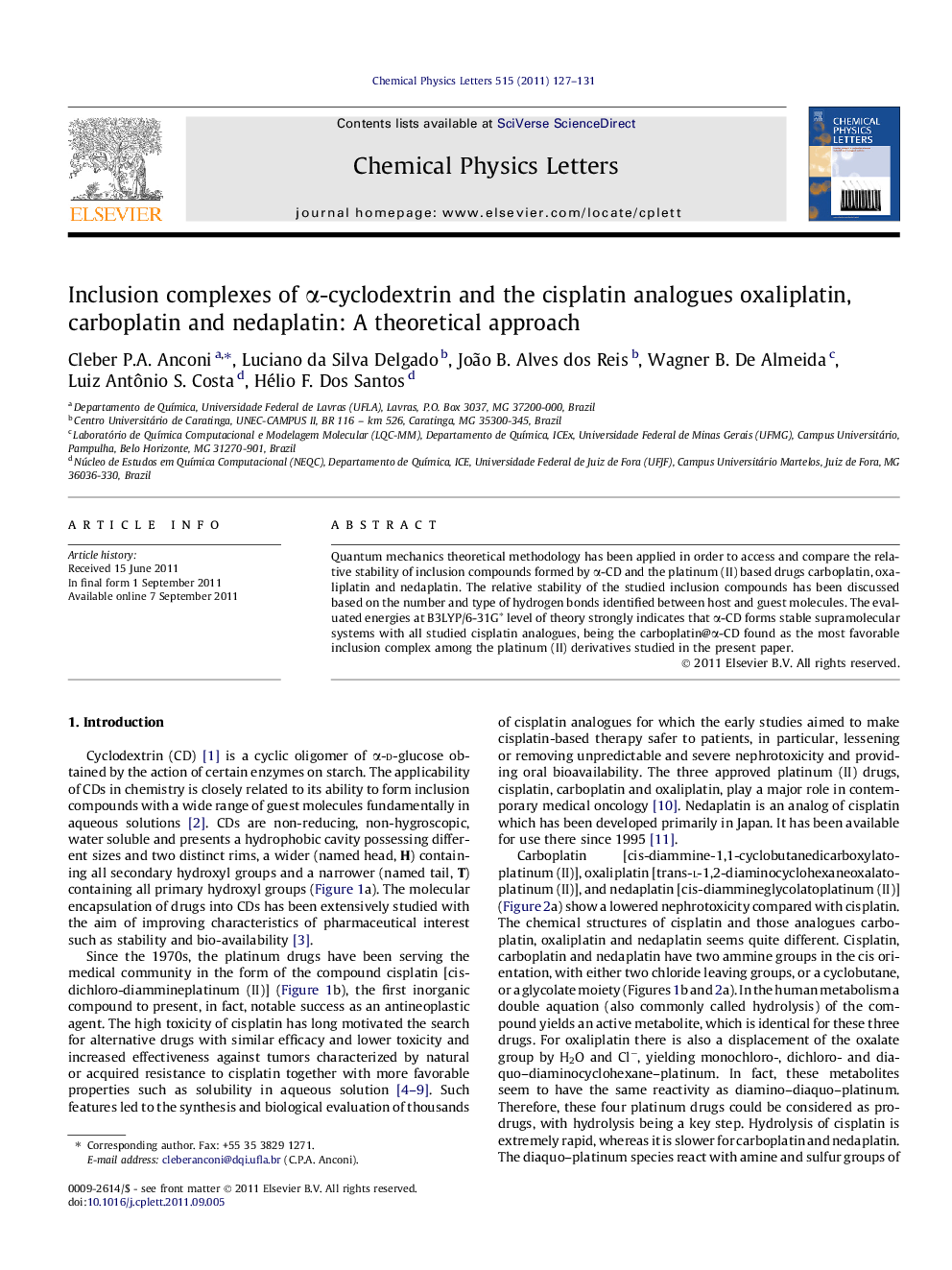| Article ID | Journal | Published Year | Pages | File Type |
|---|---|---|---|---|
| 5383949 | Chemical Physics Letters | 2011 | 5 Pages |
Quantum mechanics theoretical methodology has been applied in order to access and compare the relative stability of inclusion compounds formed by α-CD and the platinum (II) based drugs carboplatin, oxaliplatin and nedaplatin. The relative stability of the studied inclusion compounds has been discussed based on the number and type of hydrogen bonds identified between host and guest molecules. The evaluated energies at B3LYP/6-31Gâ level of theory strongly indicates that α-CD forms stable supramolecular systems with all studied cisplatin analogues, being the carboplatin@α-CD found as the most favorable inclusion complex among the platinum (II) derivatives studied in the present paper.
Graphical abstractDownload high-res image (52KB)Download full-size imageHighlights⺠We model three host-guest systems involving Pt(II) complex and α-CD. ⺠Structures and interaction energies are provided at two distinct DFT levels of theory. ⺠Increasing relationship between complex stability and intermolecular hydrogen-bond was found. ⺠Dispersion forces play a role for oxaliplatin inclusion compound ⺠Caboplatin forms quite stable complex with cyclodextrin.
